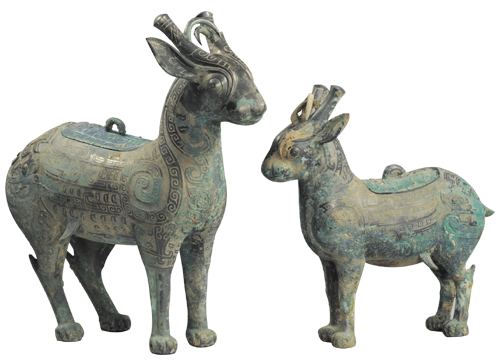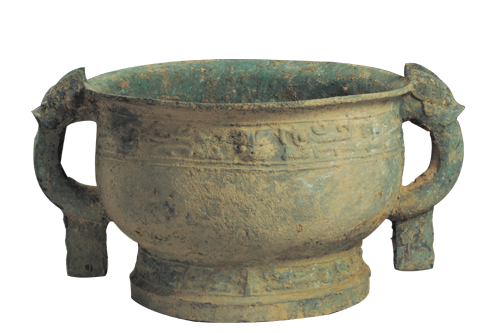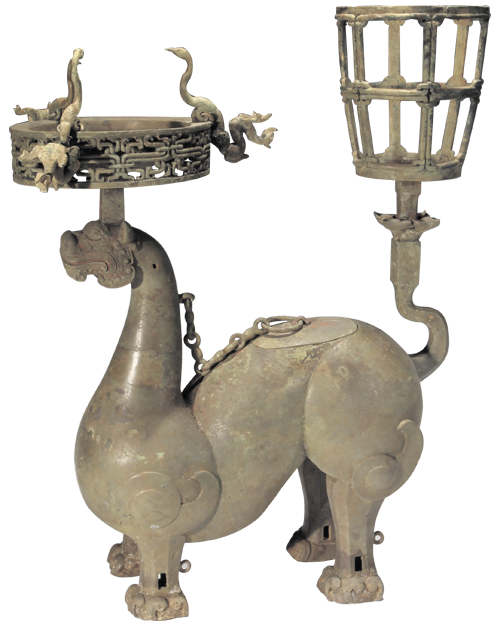The Top 10 archaeological discoveries of 2013 have been unveiled. From ancient tombs to valuable engravings, they provide a snapshot of the valuable relics buried beneath the earth in China. Wang Kaihao reports.
The Top 10 list of archaeological discoveries in China in 2013 was announced by the State Administration of Cultural Heritage last week, a prize which has been dubbed by media as "the Academy Awards of Chinese archaeology". "Having a strong public impact is only a part of our criteria, which emphasizes a candidate's academic significance. So some of the more widely talked about discoveries, such as Tomb of Shangguan Wan'er-China's woman prime minister in the Tang Dynasty (AD 618-907)-are not included in the final list," says Wang Wei, director of the Institute of Archaeology under the Chinese Academy of Social Sciences and a member of the 21-member judging panel. The panel also includes scholars from various institutions, including Peking University, the Palace Museum and the National Museum of China. "This list attracts public interest and enhances awareness of the importance of protecting cultural relics. It is a little unusual that the list doesn't include any Neolithic or earlier relics this year, though some candidates belonged to that period," says Tong Mingkang, deputy head of the State Administration of Cultural Heritage. "Those were also great discoveries, but some of the discoveries from later dynasties are too extraordinary. It's really difficult to select the final 10 items in such a close competition." China Cultural Relics News, which is affiliated to the administration, has organized the annual event since 1990. Here we present 2013's Top 10 archaeological discoveries (ordered by period of time), with comments from the project leader of each dig:

The set of animal deity-shaped drinking vessels is one of the most precious finds from the Shigushan Tombs in Baoji, Shaanxi province.[CHINA DAILY]

A bronze ritual vessel found in the Shigushan Tombs.[CHINA DAILY]
1. Shigushan Tombs of the Western Zhou Dynasty (c. 11th century-771 BC), Baoji, Shaanxi province
Fifteen tombs were unearthed in the southern outskirts of Baoji, containing about 230 articles of cultural significance, including 92 bronze ritual vessels and 26 pieces of epigraphy and family crests.
The tombs are believed to have belonged to ancient tribes in western China, which had adopted the rituals of the royals of the Western Zhou Dynasty.
One of the most precious finds is a set of animal deity-shaped drinking vessels. These are unusual because some of the styles had not previously been found in Baoji and others had never been seen in China before. Their discovery "has rewritten the textbook on bronze ware", says Wang Zhankui, a researcher from the Shaanxi Provincial Institute of Archeology.
"Different civilizations are seen in the relics like chopsticks are put together with a knife and fork on today's dining table," Wang says. "It offers us the perfect model to study ethnic cultures in the Bronze Age, and adds a splendid chapter to our studies of the politics and historical geography at that time."

A copper lamp from the Wenfengta Tombs, Suizhou, Hubei province.[CHINA DAILY]
2. Wenfengta Tombs of the Eastern Zhou Dynasty (770-256 BC), Suizhou, Hubei province
About 60 tombs were found in Hubei province during urban construction. The relics belong to the ancient state of Zeng, which became known across the globe for its delicate bronze bells called bianzhong that were found in the tomb of Marquis Yi, which was unearthed in 1978.
Other tombs from the same period had previously been uncovered, but what makes this discovery unique is that these tombs display different characteristics. A tomb of another marquis, who lived in a later period than Marquis Yi, was also found.
The finds are also the biggest discovery of Zeng's bronze ware in recent decades. Archaeologists can trace the relics back to their owners.
"The discovery fills the gap of historical recordings of the Zeng state between the earlier Western Zhou Dynasty and later periods of time," says Huang Fengchun from the Hubei Provincial Institute of Archaeology. "It also solves many mysteries bothering archeologists for a long time and will reconstruct our understanding of the overall history of Zeng."

A jade ritual article from the Jiwanggu Tombs in Yishui, Shandong province.[CHINA DAILY]
3. Jiwanggu Tombs of the Spring and Autumn Period (770-476 BC), Yishui, Shandong province
The tomb is located in a mountainous area with a unique landscape. The bigger of the two pits is 40 meters long and 13 meters wide.
The relics are distinctive among the tombs from similar periods of time due to their unusual structure: The coffin chamber and pits burying sacrificial horses and carriages are in the same cave on a slope.
Nearly 200 cultural relics were unearthed, including bronze ware, jewels, jade, and four carriages, each with two horses.
"This high-level tomb is among the biggest archaeological discoveries in Shandong province in recent years," says Hao Daohua, a researcher from the Shandong Provincial Institute of Archaeology.
"What amazes us most is its burial shape, which has never seen before and will help unveil the truth behind some historical legends surrounding the area."
